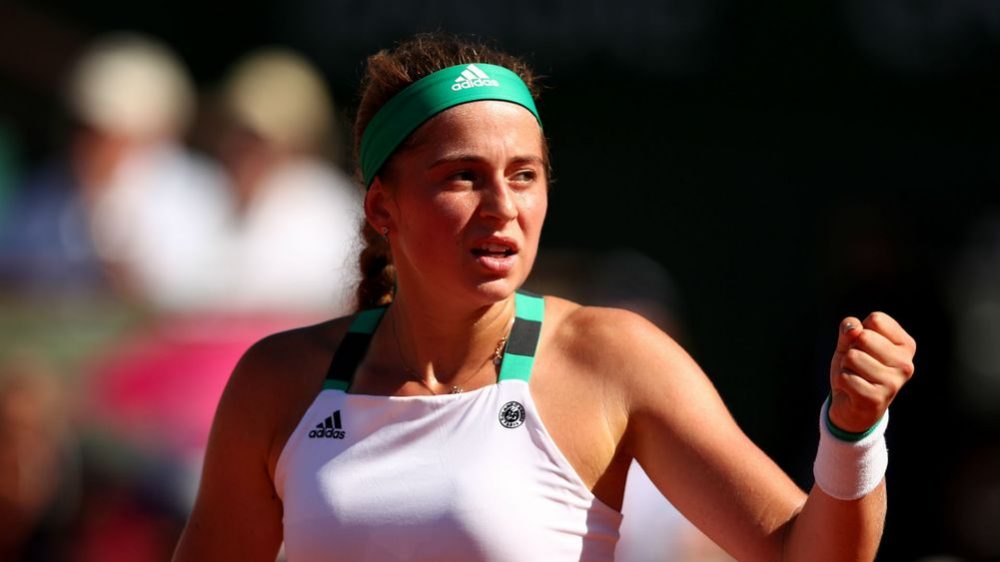Welcome to Tennis Elbow, the column that looks back on the week that was in the world of tennis. This week, Charles Blouin-Gascon recaps the 2017 French Open.
Well, how about that?!
Unseeded Jelena Ostapenko was crowned French Open over the weekend and, though you probably want to read about Rafael Nadal’s total annihilation of the men’s draw, this can wait a week. The Spaniard made history, sure, but mostly he did so by doing what he basically does every year at this time of year. Call us grumpy and old, but to some extent it’s a little boring. Been there, done that, that sort of stuff.
And Ostapenko made history, too. And she did it by doing something she had never done before.
Jelena Ostapenko wins her maiden Grand Slam title! https://t.co/tm3KSlKacZ
? 1er titre du Grand Chelem pour Jelena Ostapenko ?#RG17 pic.twitter.com/yVyxLPJuOO
— Roland-Garros (@rolandgarros) June 10, 2017
Let’s set it up, shall we?
In Paris, Ostapenko overcame Simona Halep by the final score of 4-6, 6-4 and 6-3 to be crowned champion in Roland-Garros. In doing so, she denied Halep’s chance at a first Grand Slam and, more importantly, her bid at the No. 1 ranking. The deserved win gave Ostapenko the chance to grab and hoist the Coupe Suzanne Lenglen—or well, she did tried but the thing is so heavy you know.
Trophies are heavy guys!#RG17 pic.twitter.com/9Iczl6vz6H
— Roland-Garros (@rolandgarros) June 10, 2017
If we’re being entirely honest, Ostapenko had taken advantage of a main draw well within her grasp to reach the final, finally facing in the final in Halep an opponent that was also playing at or near her peak. And in what was her first major challenge of the two weeks, the Latvian spotted the Romanian a set and a break, then another break in the final set, before going to work.
By which we mean: ripping the hell out of the ball and generally forcing Halep’s bend-but-don’t-break defence to break down. In the end, the 20-year-old Ostapenko had hit 54 winners to overcome 54 unforced errors, compared to Halep’s eight winners and 10 errors. “I knew I’m already in the final and I’m playing such a great player like Simona. I was losing 6-4, 3-0, and then in my mind I was just like, ‘I’m just going to enjoy the match, and I will try to fight until the last point.’,” she said after the win. “And then I stayed aggressive and the match turned my way.”
#SAPStatOfTheDay: Jelena Ostapenko becomes the first unseeded player to win @RolandGarros in the Open Era! @SAPSports pic.twitter.com/8JbsYirftC
— WTA (@WTA) June 10, 2017
The win was the first of a kind in many ways for the Latvian. There’s the above, yes, as well as the somewhat less impressive fact that she became the youngest Grand Slam champion since 2004, but that’s not really what we mean here.
First Title ?
First Grand Slam Title ?Jelena Ostapenko conquers @RolandGarros–> https://t.co/G7Ui9pHl95 #RG17 pic.twitter.com/S4wFGVlbDC
— WTA (@WTA) June 10, 2017
Yeah, much better.
Lest we spoil things, there’s a reason why the unseeded Ostapenko winning Roland-Garros was such an unexpected and storybook ending. She was so young, yes, but it’s mostly that up until this point in her career she had yet to hint at much of anything. She had competed in seven Grand Slams and won $1.2 million in career prize money since turning pro in 2012.
Now in 2017, she’s the first woman to win a first title at a Grand Slam event since Barbara Jordan at the 1979 Australian Open. Broaden the scope to look at all men and women who’ve accomplished the feat, and you’re looking at a first in 20 years, when Gustavo Kuerten won his first career title at the 1997 French Open.
That happened on June 8, 1997. The same day Ostapenko. Funny how life works out.
Follow Charles Blouin-Gascon on Twitter @RealCBG















